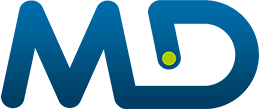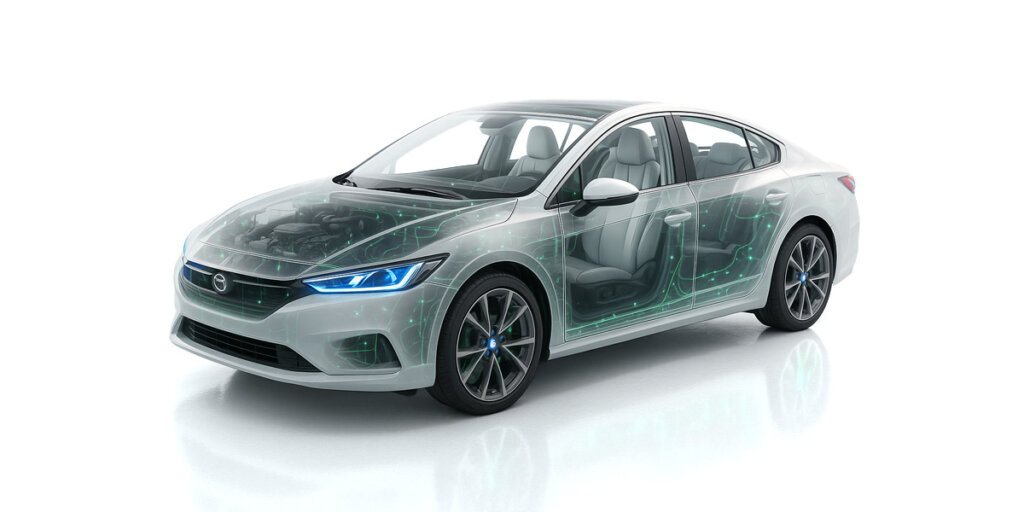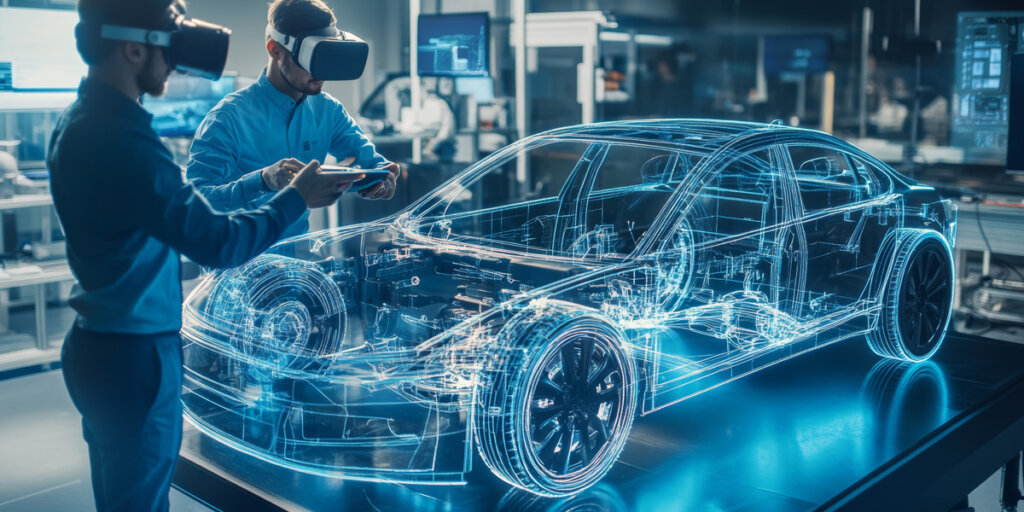Tech Talk is a series of interviews that introduce you to some inspiring personalities within and outside of MD ELEKTRONIK, the world of technology, innovation, and more.
In this episode, we met Tobias Hartl, Manager Technical Product Management at MD. We talked about his work, the platform strategies of OEMs, economies of scale, standardization and the impact on modern onboard networks.

Tobias, please tell me a little about yourself. What inspires you most about your job?
I have been with MD since 2019 – to start with, I worked as an application engineer for our international customers, and then more recently, I have been involved in technical product management in the area of multi-core cables.
Before that, I gained six years of valuable experience in the environment of mobile media head units, which I still benefit from today on a daily basis. What I particularly enjoy is the direct exchange with customers around the world and the opportunity to implement new technologies together with an international team.
OEM platform strategies promise economies of scale – including in the area of onboard networks. However, at the same time, the trend is moving towards increasing customization. What are the biggest challenges here?
The importance and complexity of onboard networks increases with each vehicle generation. So, it is essential to pay attention to scalability – even at the development stage of onboard network components. Both standardized platform requirements and vehicle-specific special features must be considered here. However, this leads to a conflict of objectives: the more you standardize, the more difficult it gets to meet every customization requirement such as those demanded by users in times of “mass customization”. Two approaches can be taken: either you equip the vehicle with many optional cables “on spec”, or you use separate cables individually for every possible combination. Both approaches have their disadvantages which is why a compromise needs to be found. This highlights the challenge involved in reconciling economies of scale and customization in this area.
What are the specific implications of this on onboard network architecture?
A clear trend towards modularizing the onboard network can be observed in the wake of the development of zone architecture. Today, instead of one single continuous cable harness, several modules or segments are used, which are combined together depending on the vehicle variant. The basis for this is a central backbone which connects the zones to each other and to the central control units. Each zone is given its own small cable set for the local elements. A completely individual main cable harness is no longer required for each module. This modular approach with one shared backbone and just a few different modules for each zone depending on the equipment simplifies construction, enables tried and tested parts to be reused in different models, and is enormously helpful in light of the increasingly shorter development cycles. At the same time, it drives forward the standardization of interfaces, connectors and even entire sections of cables. Through the multi-functional use of tried and tested elements, full advantage can be taken of efficiencies of scale. In turn, manufacturing less complex cable harnesses simplifies automated production. There is great potential here to move away from purely manual production. The integration in production of robots and cobots offers the chance to include advantageous production concepts and should therefore also be taken into consideration right from the start for new developments.
What should the standardization of data cables look like in reality?
Standardization is crucial in achieving economies of scale. The mechanical and electrical connection points must be defined uniformly.
On a mechanical level, this means, for example, that compatible connectors, which are coded and fit together, are used everywhere. Harmonizing the connectors also helps to minimize the number of different interfaces required. Only through reduction can design complexity be reduced and the use of identical components increased. Hybrid connectors combining power and data in a single connector are often already in use today. This does away with the need for several separate connectors for each module which simplifies assembly while also saving on materials, costs and space.
Test expenditure is also reduced by increasing automated production. For example, improved and contactless test systems can be used with the aid of artificial intelligence.
On an electronic level, fewer different interfaces also lead to fewer sources of error. However, challenges also exist here. For example, EMC and thermal influences have to be mastered. One possible example of standardization and simplification would be an exterior rear-view mirror module in which a single cable carries both the power supply for the Blind Spot Assist, the heating element and the surround-view camera as well as the data transmission for the assistance systems – depending on the vehicle’s equipment. The video signal is transmitted via the automotive Ethernet protocol. This omits the need for several separate sections of cable, saves space, reduces weight and simplifies assembly.
To what extent do you see software-based functions as an opportunity to implement customization more powerfully than through individual hardware solutions?
Hardware can be further standardized by mapping functions in the software. This means that we develop multi-functional sections of cable which have the same physical design but enable different functions depending on software activation. So, certain items of equipment can be pre-installed but only activated or expanded at a later stage – very easily via an over-the-air-update. A good example of this is rear seat entertainment. The cable harness in the second row of seats can be arranged so that it supports both simple USB charging functions as well as complete media modules with displays, touch control and streaming capability – all via the same connector and data cables. The user can decide whether or not to enable the functions at a later stage. New features such as app integration, additional media sources or screen mirroring can be added by software at a later stage without requiring any new hardware or cable connections. What this means for the manufacturer is less variants in the cable harness, greater quantities – and therefore clear economies of scale and the potential to generate completely new sources of income. The result for the end customer is additional increase in value through maximum flexibility and customization throughout the vehicle’s entire life cycle. And with a view to the cable harness design, software-based tools such as digital twins or automated routing can also bring about improvements already during the development stage.
What role does MD ELEKTRONIK play in this change to the modular, zone-based onboard networks of the future?
At MD ELEKTRONIK, we take a holistic approach in contributing to modular, zone-based architecture in order to make the most of economies of scale. Our focus lies not only on supplying assembled elements but also on developing optimal solutions together with our customers. This already starts with the development of connectors and the development and construction of production systems and automation solutions. Thanks to this combination of product and production know-how, we can actively support our customers in implementing the next generation of onboard network architectures – with flexible serial solutions that suit every platform strategy.
Tobias, many thanks for this interesting interview!



